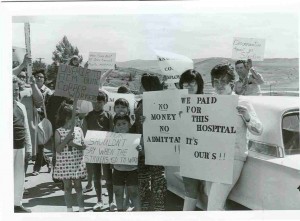
Although excluded from most jobs in the mines and smelters of Butte and Anaconda (with the short-lived exception of female smelter workers in World War II), women played integral roles in the survival of these company towns. The success of each community depended on the wages of laborers who toiled for the Anaconda Copper Mining Company. When those wages were threatened—during strikes or company shutdowns—the entire community mobilized. During periods of conflict, women’s contributions to the household economy became especially significant, as women pinched pennies and took on paid employment to help their families survive. These and other activities in support of labor were crucial to community survival, but men’s resistance to women’s full participation in union efforts also reveals the prevalence of conservative gender ideals in mid-century Butte and Anaconda.